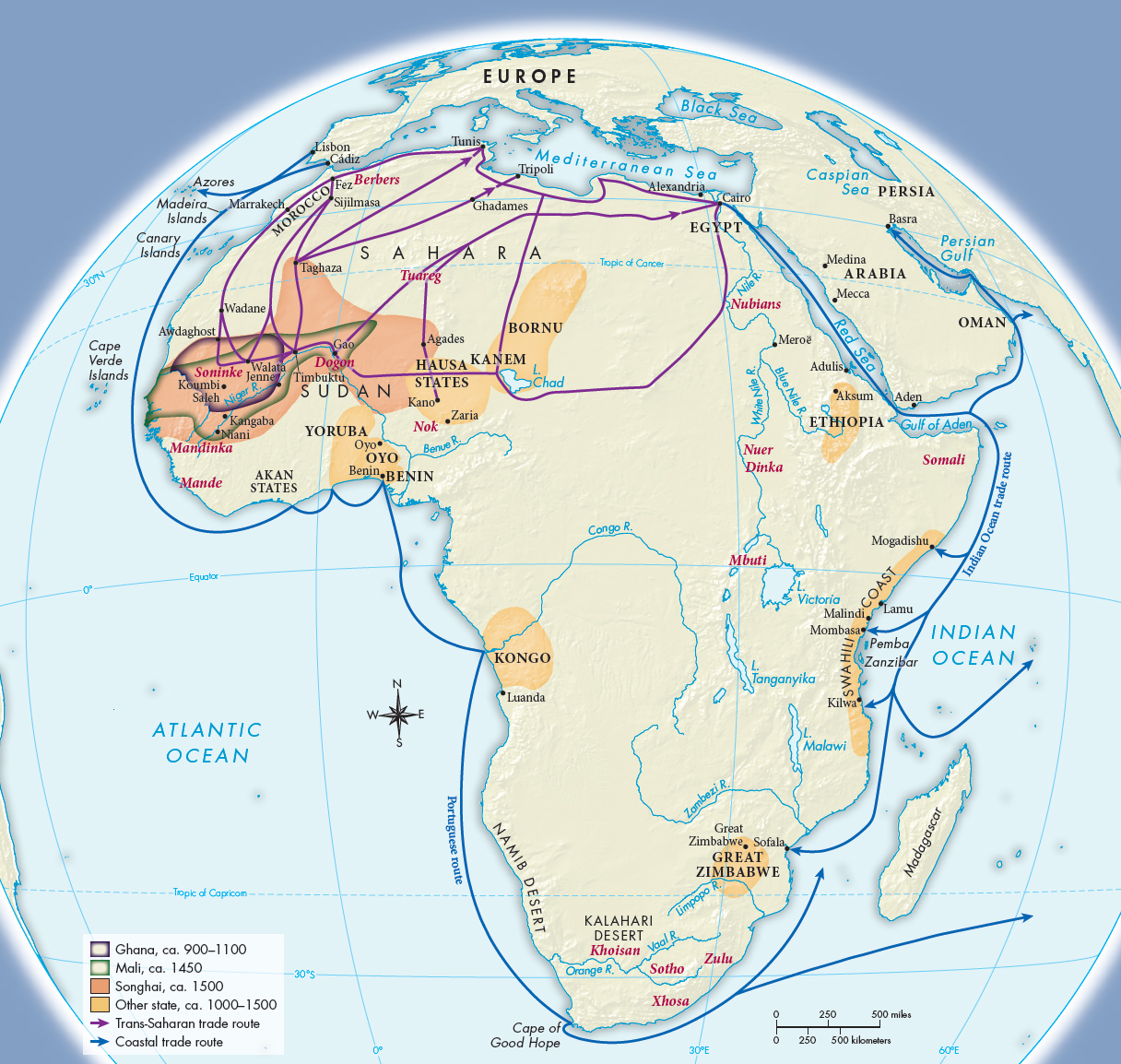A History of World Societies:
Printed Page 273
A History of World Societies Value
Edition: Printed Page 272
Chapter Chronology
“Trans-Saharan trade” refers to the north-south trade across the Sahara (Map 10.2). The camel had an impact on this trade comparable to the very important impact of horses and oxen on European agriculture. Although scholars dispute exactly when the camel was introduced from Central Asia — first into North Africa, then into the Sahara and the Sudan — they agree that it was before 200 C.E. Camels can carry about five hundred pounds as far as twenty-five miles a day and can go for days without drinking, living on the water stored in their stomachs. Temperamental and difficult to work with, camels had to be loaded on a daily, sometimes twice-daily, basis, and much of the cargo for a long trip was made up of provisions for the journey itself. Nevertheless, camels proved more efficient for desert transportation than horses or oxen. The trans-Saharan trade brought lasting economic and social change to Africa, facilitating the spread of Islam via Muslim Arab traders, and affected the development of world commerce.

Mapping the PastMAP 10.2 African Kingdoms and Trade, ca. 800–1500 Throughout world history powerful kingdoms have generally been closely connected to far-flung trade networks.ANALYZING THE MAP Which kingdoms, empires, and city-states were linked to the trans-Saharan trade network? Which were connected to the Indian Ocean trade network? To the Portuguese route?CONNECTIONS How were the kingdoms, empires, and city-states shown on this map shaped by their proximity to trade routes?

